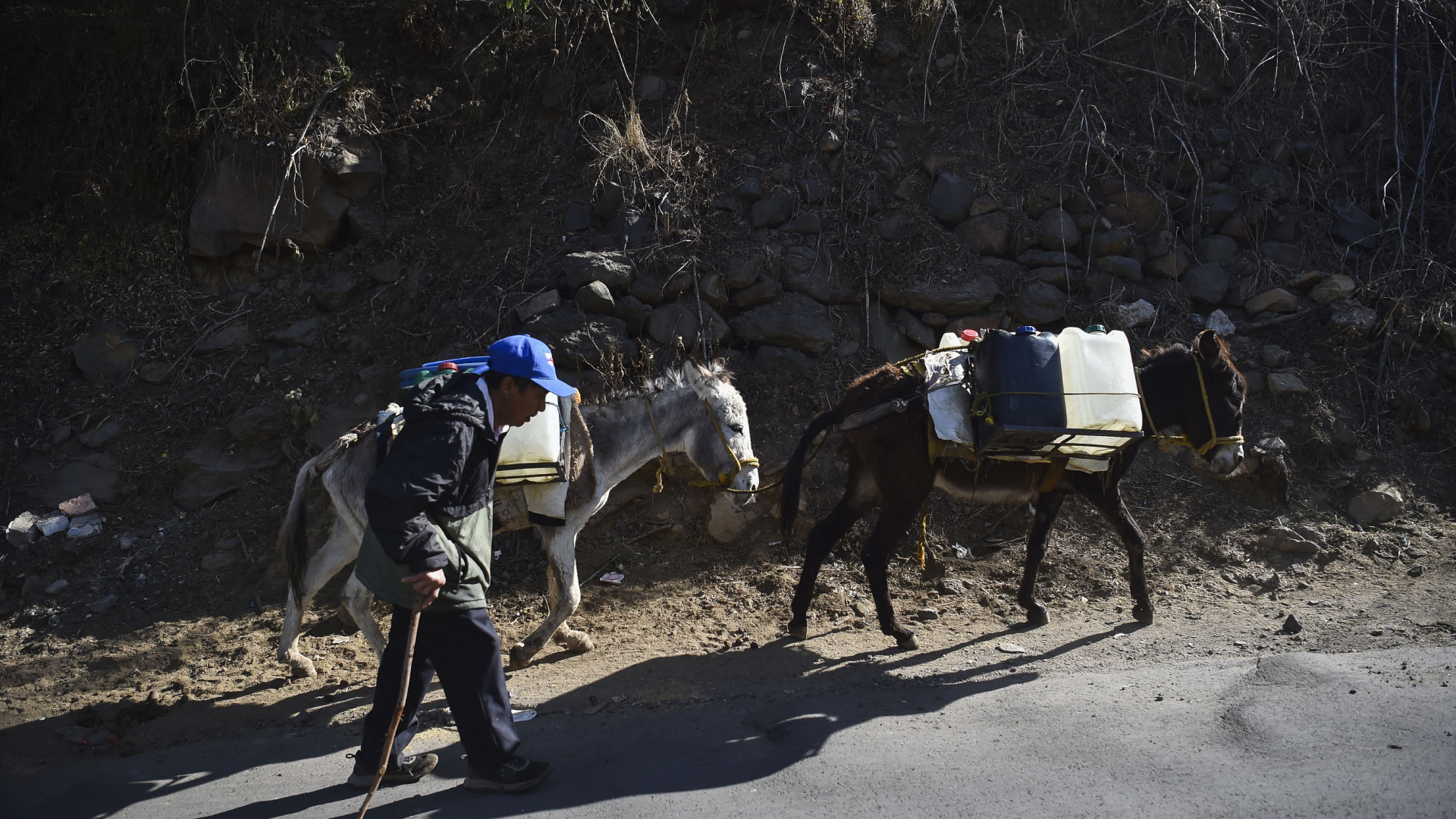Water shortages throughout Mexico will almost certainly continue during 2024 due to extensive drought and poor management
This assessment was issued to clients of Dragonfly’s Security Intelligence & Analysis Service (SIAS) on 05 April 2024.
- Water rationing and restrictions to business operations are probable in the worst affected northern and central areas of the country
- Despite being a key issue of concern for voters, whoever wins the 2 June election will be reluctant to pay the political cost of removing subsidies
We anticipate that water shortages will continue across Mexico during 2024, and beyond. And so it seems very likely that the authorities will impose restrictions on businesses’ water usage. The rainy season is due to start in May. But weather patterns have become increasingly unreliable. While meteorologists expect that summer precipitation will return to normal levels, specialists from a leading Mexican university have pointed out that in the past forecasts made during El Nino events – as is currently the case – have been comparatively unreliable, so a below-normal rainfall season is plausible.
An overhaul of the water sector is unlikely to materialise in the coming year due to the forthcoming national elections of 2 June. Access to water is currently heavily subsidised and seemingly does not deter waste. However, the political sensitivities of the issue have made successive governments reluctant to introduce a concession regime and a pricing structure that reflects the actual cost of the resource.
Reform of the sector is unlikely regardless of who wins the election. No political candidate has pledged to change it, which means that the problem will persist in the coming years. This is particularly as climatic trends are also making weather patterns more unpredictable and extreme.
Northwestern and central regions likely to be worst affected
According to the most recent official data, more than 65% of the country was experiencing moderate to exceptional drought. As shown on the map, this was mostly in the northwestern region: Chihuahua, Coahuila, Durango, San Luis Potosi, Sinaloa, Sonora and Zacatecas states. The central region, Aguascalientes, Colima , Guanajuato, Jalisco, Michoacan and Queretaro states, was also in moderate to exceptional drought, according to the National Water Commission (CONAGUA), the sector regulator.
Even if things improve this summer, yearly droughts are worsening. Over the last decade they have increased in frequency, intensity and duration (see the graph below). This means that water shortages are almost certain to be a long-term problem. As of 4 April, two thirds (144) of the country’s main 215 dams and lakes were less than 50% full, according to CONAGUA’s National Water Information System (SINA).
Mexico City is also likely to continue having water shortages. At present, more than 40% of residents lack access to regular water supplies. This is unlikely to change. According to CONAGUA, as of 4 April, the three dams that make up the Cutzamala system that supplies around 30% of the water consumed by Mexico City and its surrounding area, the Valley of Mexico, was at 36.79% of capacity (down from 41.22% on 1 January).
Restrictions and rationing probable in many states
The authorities typically impose flow restrictions to water users during the dry season. This is the case in urban areas that have access to the resource via pipes, including both domestic and commercial or industrial consumers. In areas severely affected by droughts and water shortages, officials also withhold permits for businesses that get water directly from rivers, lakes and aquifers. These seasonal restrictions are very likely to continue.
 The current government submitted in early February a package of bills to congress that aims to prioritise water supply for personal and domestic users over commercial activity. This would deny permits for hydrocarbon production through fracking and open cast mining as water-intensive industries. It would also limit water concessions for industrial use in areas affected by shortages. This would potentially affect foreign businesses interested in nearshoring and establishing operations in the north of the country, regardless of the sector they work in.
The current government submitted in early February a package of bills to congress that aims to prioritise water supply for personal and domestic users over commercial activity. This would deny permits for hydrocarbon production through fracking and open cast mining as water-intensive industries. It would also limit water concessions for industrial use in areas affected by shortages. This would potentially affect foreign businesses interested in nearshoring and establishing operations in the north of the country, regardless of the sector they work in.
The bill is unlikely to pass due to the ruling party’s lack of majority in congress. But the governing party’s presidential candidate Claudia Sheinbuam, who is also leading in the pre-election polls, has said that she would make the package a central part of her government plans. She would only be able to do this if her National Regeneration Movement (Morena) party and its allies win enough seats in congress on 2 June. Crucially, she has not proposed to implement a new pricing structure for water use, which is essential to tackle the problem effectively. Neither has her main conservative rival, Xochitl Galvez.
In places affected by severe shortages, the authorities are likely to pressure companies perceived to use too much water. In 2022, the government called on bottling plants in Nuevo Leon to support the local population. One firm responded by donating 20% of its water consumption to the city, providing water using pipe trucks, and delivering drinking water to vulnerable communities. In 2023 the government also pressured US car manufacturer Tesla to set up its operations in the south due to water scarcity in Nuevo Leon; the company has not altered its plans.
 There is also a small but credible risk of the government directly blocking industrial projects due to concerns over water shortages. This was the case in 2020, when the current administration cancelled the construction of a US-owned brewery in Mexicali, Baja California, after voters rejected the proposal in a referendum that was not legally binding. The company instead built the plant in the southern Veracruz state.
There is also a small but credible risk of the government directly blocking industrial projects due to concerns over water shortages. This was the case in 2020, when the current administration cancelled the construction of a US-owned brewery in Mexicali, Baja California, after voters rejected the proposal in a referendum that was not legally binding. The company instead built the plant in the southern Veracruz state.
Local communities likely to protest over water-related issues
Government efforts to curb demand are likely to continue to be awareness campaigns to counter waste and restriction of water flows. And so supplies of water in cities will probably continue to be limited to only certain times of the day. In recent years, such restrictions have led to protests. According to data from our partner the Armed Conflict Location & Event Data Project (ACLED), since 2020 there have been protests over water availability in most of the country’s 32 states. However, these happened most often in Guerrero, Morelos, Nuevo Leon, and Veracruz states, as well as in Mexico City.
Protesters typically focus their grievances at the local authorities, particularly water regulators. While there have been a few instances in which protesters have targeted specific companies, these have been rare. This was the case of Constellation Brands in Mexicali. Locals there protested against the project before construction started in 2018 due to the area’s water scarcity, which led to the referendum that ended forcing them to change their plans. Locals similarly protested in 2021 against the Canadian-owned Niagara Bottling in Soyaniquilpan, Mexico state, due to concerns over their water usage. Local farmers claimed they would struggle to grow their crops.
Water-related demonstrations are generally small, with most attracting only a few hundred participants. However, even in the largest cases – such as those in Monterrey and Hermosillo, Sonora, that involved a few thousand participants in June 2022 – protests have been largely peaceful. They mostly cause traffic disruption in urban areas or disruption to travel when protesters have blocked roads to demand attention to their grievances. Given the poor prospects of an infrastructure and regulatory overhaul, protests are likely to continue taking place for the foreseeable future.
Image: Man walks with his donkeys carrying containers full of drinking water to his home in Santa Cruz Acalpixca, Xochimlico mayorality, Mexico City on 11 March 2024. Photo by Rodrigo Oropeza/AFP via Getty Images.




